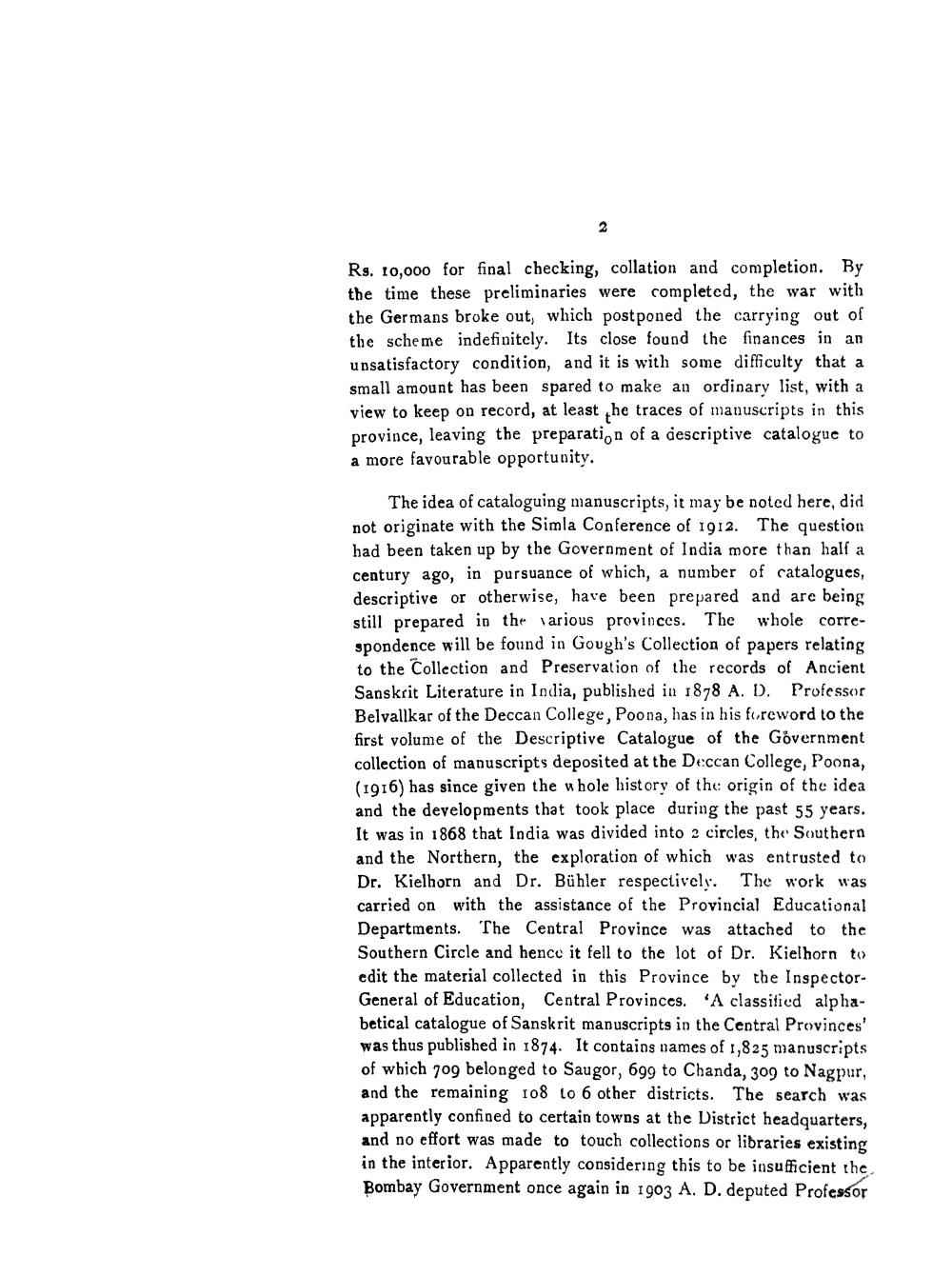________________
Rs. 10,000 for final checking, collation and completion. By the time these preliminaries were completed, the war with the Germans broke out, which postponed the carrying out of the scheme indefinitely. Its close found the finances in an unsatisfactory condition, and it is with some difficulty that a small amount has been spared to make an ordinary list, with a view to keep on record, at least , he traces of manuscripts in this province, leaving the preparation of a descriptive catalogue to a more favourable opportunity.
The idea of cataloguing manuscripts, it may be noted here, did not originate with the Simla Conference of 1912. The question had been taken up by the Government of India more than half a century ago, in pursuance of which, a number of catalogues, descriptive or otherwise, have been prepared and are being still prepared in the various provinces. The whole correspondence will be found in Gough's Collection of papers relating to the Collection and Preservation of the records of Ancient Sanskrit Literature in India, published in 1878 A. D. Professor Belvallkar of the Deccan College, Poona, has in his foreword to the first volume of the Descriptive Catalogue of the Government collection of manuscripts deposited at the Deccan College, Poona, (1916) has since given the whole history of the origin of the idea and the developments that took place during the past 55 years. It was in 1868 that India was divided into a circles, the Southern and the Northern, the exploration of which was entrusted to Dr. Kielhorn and Dr. Bühler respectively. The work was carried on with the assistance of the Provincial Educational Departments. The Central Province was attached to the Southern Circle and hence it fell to the lot of Dr. Kielhorn to edit the material collected in this Province by the InspectorGeneral of Education, Central Provinces. "A classified alphabetical catalogue of Sanskrit manuscripts in the Central Provinces' was thus published in 1874. It contains names of 1,825 manuscripts of which 709 belonged to Saugor, 699 to Chanda, 309 to Nagpur, and the remaining 108 to 6 other districts. The search was apparently confined to certain towns at the District headquarters, and no effort was made to touch collections or libraries existing in the interior. Apparently considering this to be insufficient the Bombay Government once again in 1903 A. D. deputed Professor




